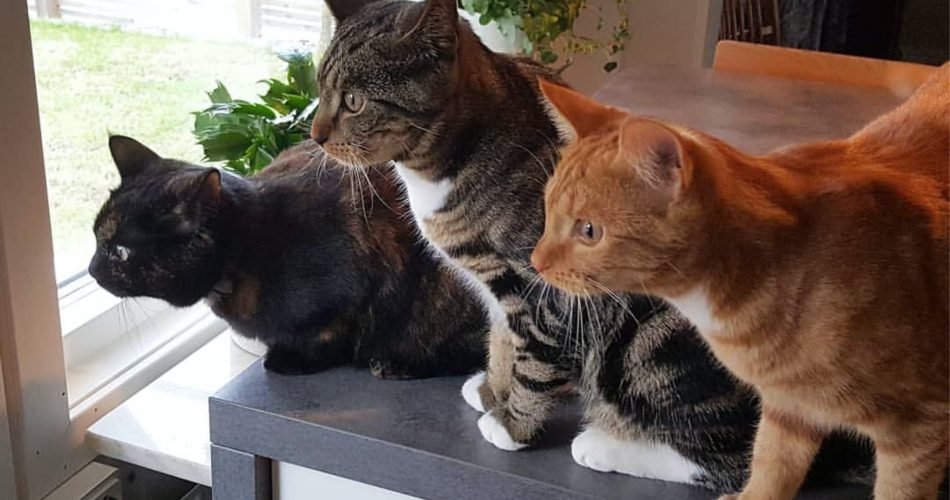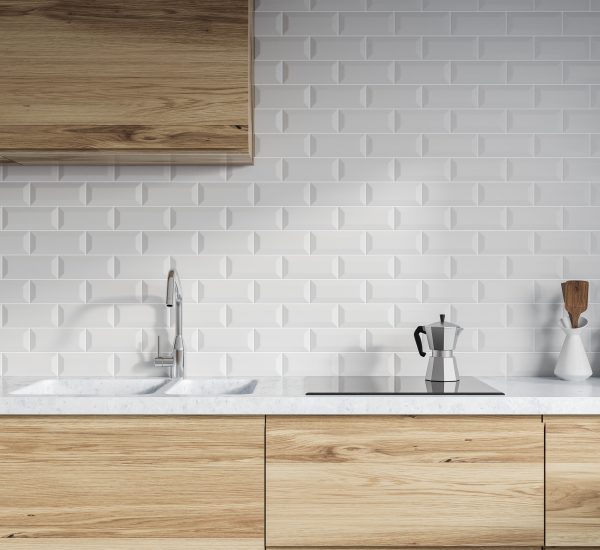A room that’s always associated with the family gathering together – our kitchens are often described as the beating heart of our homes. While we think about how to make our kitchens and welcoming for our family, our guests and our children, quite often there’s one “family member” who may get forgotten.. our beloved pets.
In the UK, around 50% of households share their home with a pet. 24% of UK adults own (or more accurately are owned by) a cat, and 26% of the adult population have a dog. So finding a welcoming, safe space in your kitchen can certainly enhance the wellbeing of your pet.
With this in mind, we give you some of our top tips for keeping harmony in your pet friendly kitchen.
 Keeping your kitchen clean with a pet
Keeping your kitchen clean with a pet
Our kitchen’s often have the most traffic out of all the rooms in our homes, and adding little paws into the mix can mean that we feel that keeping the kitchen clean is a constant battle. However there are some ways in which you can start to minimise the mess made from pets.
If you have a cat or dog who likes to lean their paws against kitchen cupboards – it’s wise to consider an easy to clean kitchen door finish. However it’s worth thinking about how often you like to clean your kitchen. High gloss kitchen units can show marks easily, but conversely are super easy to wipe down with just a damp cloth.
Solid wood doors from Kitchen Warehouse are finished with a layer of lacquer which helps to protect them, and makes it quite easy to clean – certain grain effects will better disguise some of the mess made from our pets, but a good wipe down daily will help to keep hygiene.
If you have cats – think carefully about kitchen worktops, as unlike our canine friends, they are easily able to walk along our work surfaces. Take a look at some of our guides to choosing the right worktops.
 Making your kitchen safe for your pet
Making your kitchen safe for your pet
Often one of the biggest hidden hazards to your pet within your kitchen is food. Everyday goods which are perfectly fine for humans can be toxic to dogs – and it’s not just chocolate. Grapes and raisins can be particularly toxic, so be sure to keep food items well out of your dogs reach. If you have a particularly “pro-active” dog when it comes to hunting down treats – consider adding child locks any kitchen cabinets or fridge/freezer doors which are within their reach.
Thanks to their dexterity – cats can be most at risk from our everyday appliances – particularly the kitchen hob – so consider either a cover, or if practical think about choosing an induction hob – as this will only heat up when covered with a pot – making it a safer option for those with feline companions.
As any cat owner will know – they seem to be particularly adept at swiping things to the floor with either their paws or tail, so ensure that leads are keep short on appliances such as kettles and toasters – and keep knives safely away from worktops.
 Feeding time!
Feeding time!
Where practical having a dedicated feeding space for you pets, which is away from any hazards is important – and helps with those more fussy eaters – giving a sense of routine.
To keep it clean and hygienic, place an easy to clean feeding mat underneath food and water bowls, which can easily be kept clean. Silicone feeding mats can be ideal as they are often dishwasher friendly, and stop food bowls from flying across the room.
It’s a good idea to keep your pets feeding area away from anywhere that cross contamination can occur, so avoid keeping their food or bowls anywhere near cleaning products, your own food, or other toxins.
Also when cleaning your kitchen, make sure to remove any pet bowls and mats so that your product doesn’t contaminate them.
While of course, many may debate whether pets should come into the kitchen at all, as a nation of animal lovers, most of us welcome our pets into our kitchens, and making it as safe as possible for both pet and human is key to making it work.







